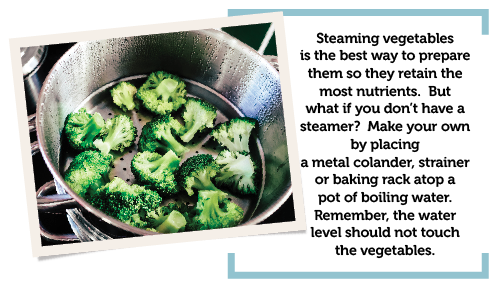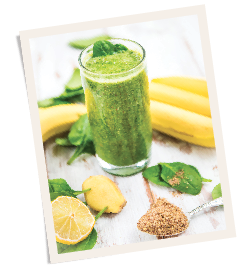 By Anja Springthorpe
By Anja Springthorpe
Cruciferous vegetables originate from plants botanists classify as Cruciferae or Brassicaceae. Hence cruciferous vegetables or brassica vegetables are interchangeable terms. More than 3,000 species of cruciferous plants have been identified worldwide. The most popular examples in the US are broccoli, Brussels sprouts, cabbage, cauliflower, collard greens, kale, kohlrabi, mustard, rutabaga, turnips, bok choy and Chinese cabbage.
In most cases, it’s the flower or root of the cruciferous plant that is harvested and eaten. Cruciferous vegetables come in many different shapes and sizes, but all boast one unique component linked to significant impact on health.
Glucosinolates are sulfur-containing compounds that impart the often pungent, spicy and bitter taste of cruciferous vegetables. Arugula and collard greens are great examples of this distinct flavor. Glucosinolates purportedly contribute to the well-documented effects of cruciferous vegetables on health. Research has established that cruciferous vegetables are associated with lower rates of cardiovascular disease and cancer. In fact, one comprehensive analysis of several clinical trials found a reduced risk of bladder, breast, colorectal, endometrial, gastric, lung, ovarian, pancreatic, prostate and renal cancer.
Most cruciferous vegetables are cooked prior to eating, which has been found to reduce levels of glucosinolates. While many Cruciferae do require some degree of preparation, broccoli, Brussels sprouts, cabbage and kale are just a few examples that can safely be eaten raw. Alternatively, brief steaming is suitable to soften the vegetables without losing health benefits.
Recent scientific interest in Cruciferae plants motivated gardeners across the country to introduce these crops into vegetable gardens. These plants thrive in colder climates with moderate springs followed by mild summers. A well-scheduled planting season can result in up to three harvests per season. If home-growing is not an option, cruciferous vegetables are stocked by most supermarkets throughout the year. Inexpensive and readily available, these vegetables should be on our plates at least 3 to 4 times per week.

Cruciferous Superfood Salad with Avocado-Yogurt Dressing
Ingredients:
Salad:
- 2 cups baby arugula
- 2 cups shaved Brussel sprouts
- 1 cup shaved cabbage (red or white)
- 1 cup chopped broccoli florets
- ½ cup dried cranberries
Dressing:
- ½ avocado
- ¼ cup plain Greek yogurt
- 2 tbsp. lime juice
- ¼ cup extra virgin olive oil
- 1 tbsp. agave syrup
- Salt to taste
Directions:
Salad:
Combine all ingredients in a large bowl.
Dressing:
Combine all ingredients in a food processor and pulse until smooth. If dressing is too thick, add a little water to thin. Add dressing to vegetables, mixing until well combined.
Refreshing Green Smoothie with Mango and Banana
Combine 1 handful of spinach, 1 handful of kale, ½ frozen banana, 3-4 frozen mango chunks and 1 cup of coconut milk (other non-dairy milks will work too) in a blender. Blend until smooth. Top with ground flaxseeds.



